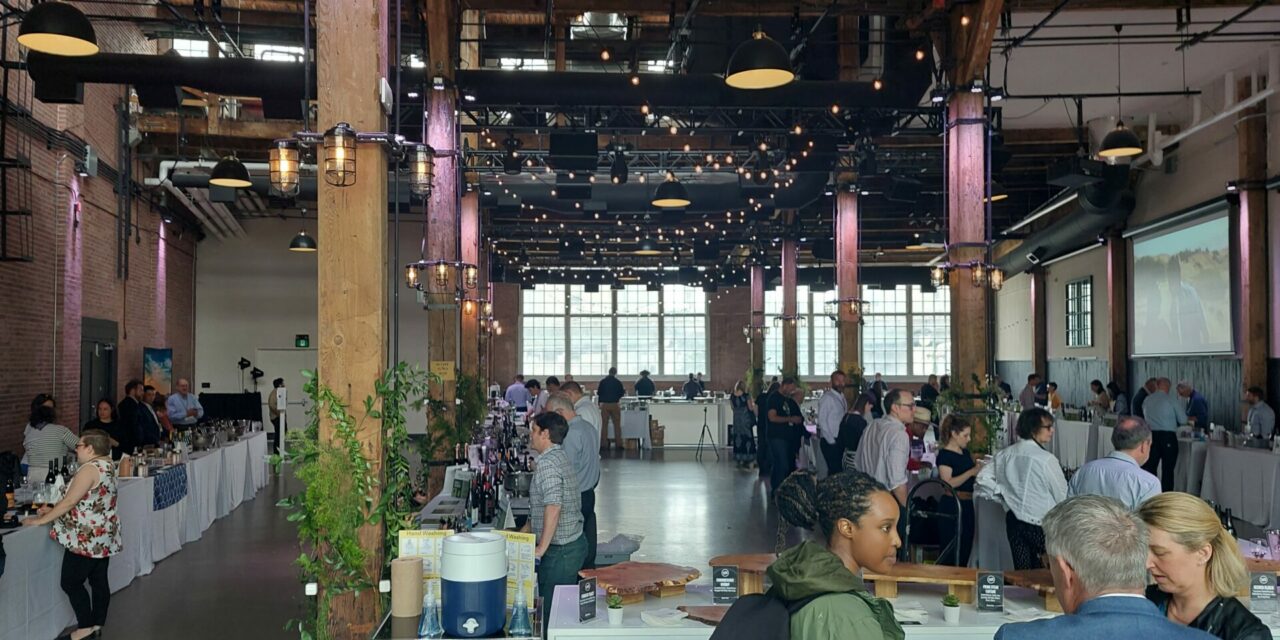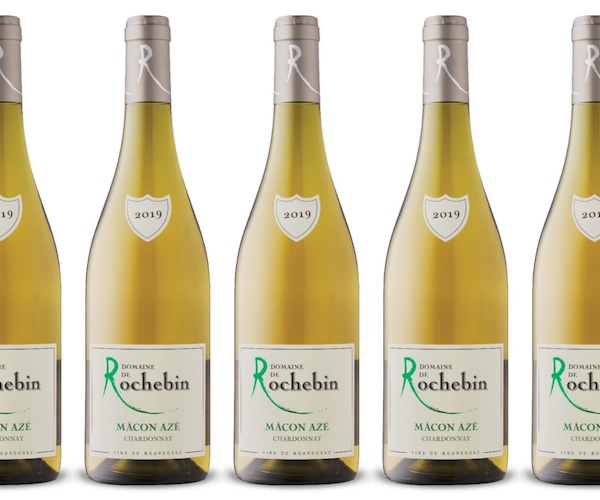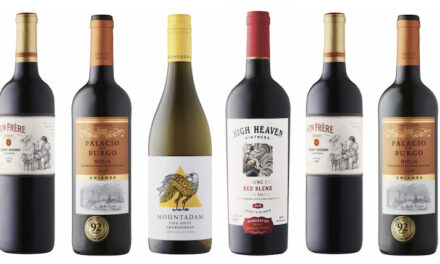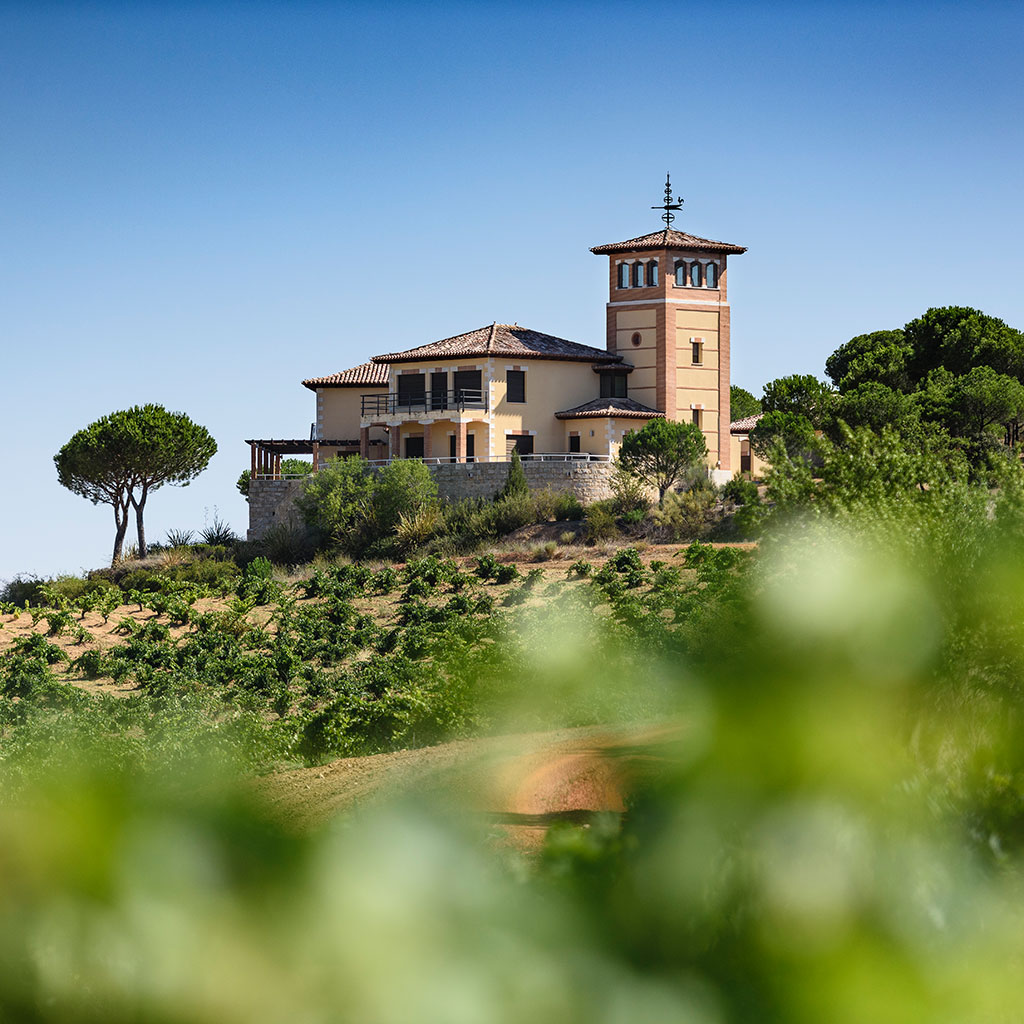When I attended the 2021 Oregon & Washington State Wine & Food Expedition, I was floored by my first experience at such a large tasting. This year, I had a game plan. I knew the format, the producers I was interested in, and how to spend my time. I was older, wiser, more experienced; I was ready. Unfortunately that plan went straight out the window.
As the first year without COVID restrictions, the tasting room was an open field, a complete change from the rigid and structured seating of 2021. Packed into the halls of the Steam Whistle Brewery, attendees strategically fought for a place at each tasting table, the most popular producers hounded like red carpet celebrities. Nevertheless, I clutched my notepad tight and went in.
Oregon was my primary target, and Pinot Noir was, for me, king. One after another, I was astounded by the consistency of the wines. Oregon is and has been producing Pinot Noir’s across the board that swing toe-to-toe with the great Burgundies that inspired them. Some even link directly to Burgundy themselves; Domaine Drouhin, founded in 1987, is owned by the Drouhin family of Burgundy (Maison Joseph Drouhin). They absolutely slayed me with with their 2018 Roserock “Zéphirine” Pinot Noir, a truly elegant, expressive, cellar-worthy, pure-blooded wine. Exotic spices, wild berries, electric acidity and uber-fine tannins, seriously stunning stuff.
![]()
I feel that it’s coming to a point where it is almost an injustice to describe a wine from Oregon as “Burgundy-esque” as the style of the wines has become so recognizable and distinct. Many times working the floor as a Somm I have described a Burgundy wine as Oregon-esque, and that alone speaks volumes.
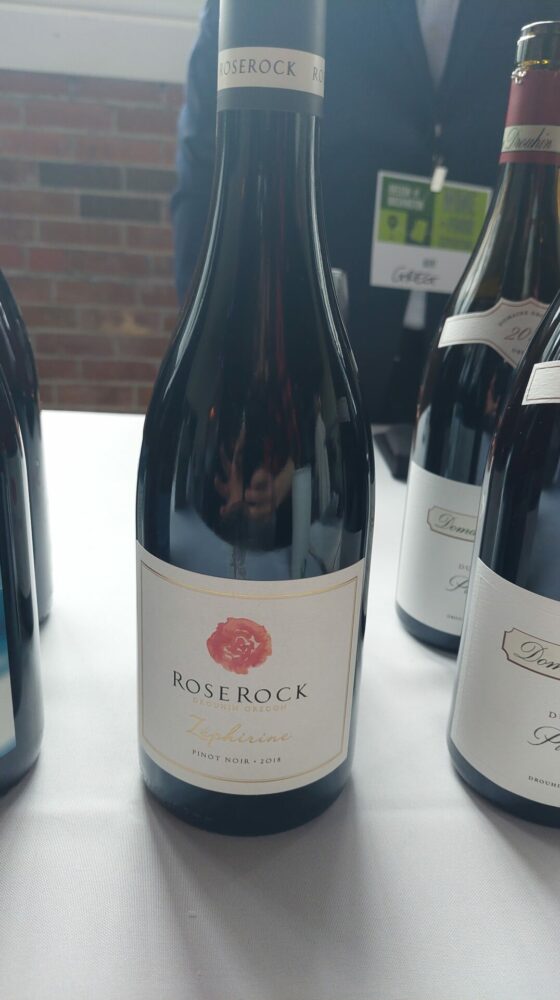
I spent about 2 hours trying to edit my reflection out of the bottle before giving up completely.
My dearly beloved Citation made a return this year as well, and I beelined directly to their table as soon as the doors opened. In 2021 I had the honour of speaking directly with the man behind Citation, Howard Rossbach, who made such a strong impression on me I featured Citation (and him) as the centre of my article last year. Howard’s 2006 Pinot Noir was even better than I remember it being the year prior, with bright and wild rhubarb, fresh mushrooms, sarsaparilla, and powdery tannins, it still felt like it had more to give.
![]()
I’ve always admired Howard’s approach to winemaking, allowing the conditions of the season to shape what the wine becomes, rather than push to become what it isn’t. In his own words “The wines were made in the vineyard, all I have to do is not **** them up”. I cannot wait to see him again next year.
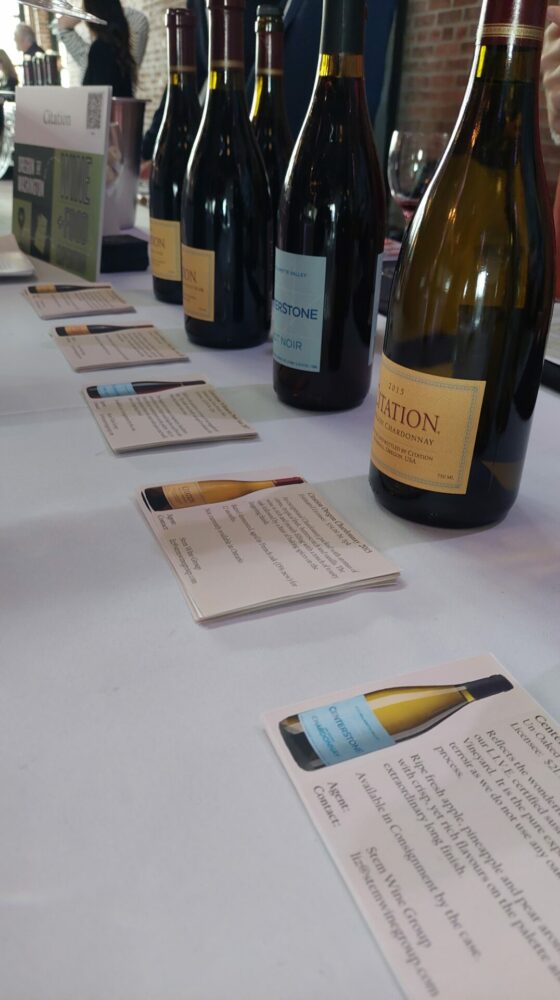
Citation’s “Stairway to Heaven” as Howard lovingly refers to his trademark flight
As for Washington, I had a singular mission: taste as much Washington Syrah as possible. The year prior, I only started tasting Washington wines in the last 10 minutes, and most of it Cabernet Sauvignon. This year was my chance to make up on what I missed, or so I thought.
Dodging Bordeaux varieties left and right, I was surprised to find only a few of my beloved Syrahs on display. Last year Gramercy Cellars was my best in show from Washington, and I was not disappointed when I revisited their table… I had my expectations for the day completely shattered. Where I was expecting Shiraz, I found Côte-Rôtie. Completely different from the rich and jammy 2016 I had last year, the 2017 Walla Walla Syrah was an intensely refined and earthy wine, co-fermented with 5% Viognier to offer a rustic and complex Syrah with excellent acidity and texture.
![]()
Also on on offer was a seriously exciting Mourvèdre with a tiny 5% cut of Syrah. I braced for a nuclear explosion of tannins, but instead the wine was fresh, balanced, and simply wild. Bramble, earth, berries, exotic spices and animal musk whirled around both the nose and palate. It’s that kind of bottle that genuinely makes me excited to drink wine. With a solid price bracket and huge ambitions, it’s hard not to get starstruck. Gramercy is represented in Ontario by Nicholas Pearce Wines.
![]()
I was also most impressed by a producer I had skipped over last year, Betz. Their single vineyard Syrah, the 2018 “La Serenne” was wonderfully balanced and extremely well structured, barely showing its potential at this point in its lifespan. However the quality does come at a cost, so this one is definitely an investment for the cellar.
![]()
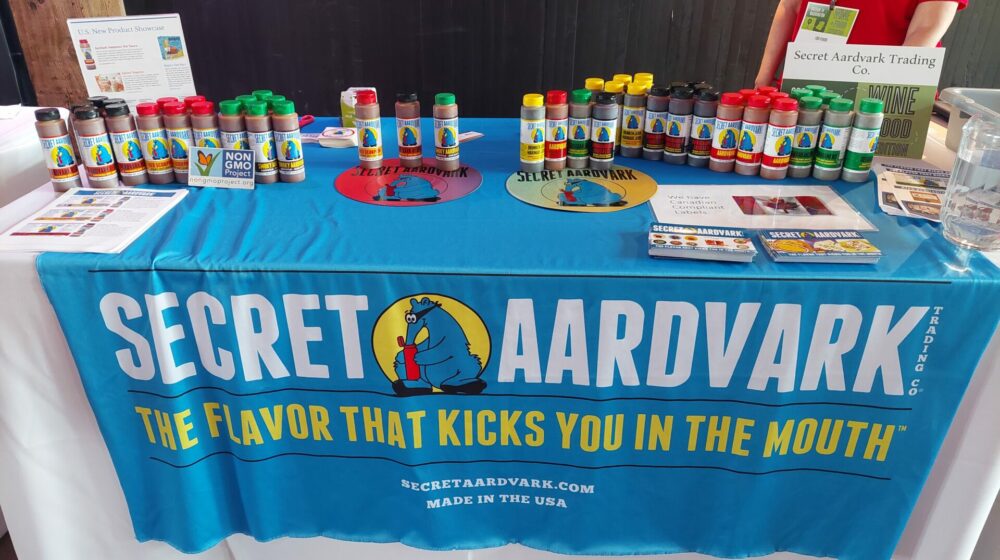
Many Washington and Oregon food producers also came out, including Secret Aardvark hot sauce, which I am borderline fanatical about.
I was almost about to leave, when I was spotted by my old coworker and amazing Somm, Nicole Richie, who directed me to a small booth at the far wall that I had missed. How thankful am I that she caught me before I made a grave mistake and left without visiting the table of Division Winemaking Company. Division finds footing on the the incredibly thin tightrope between creative winemaking, and respectful winemaking, producing wines that are both forward thinking and true to their origins. Just like when I met Howard Rossbach of Citation last year, speaking directly to the winemaker at their booth was the highlight of the whole event for me. Co-winemaker and co-owner Kate Norris was a true joy to speak with, and her passion and pure love for wine was obvious.
A wine labelled “Villages” immediately caught my eye, a designation I’d never seen outside of a French label. 2020 Division-Villages “Béton”is a Loire blend, inspired by the bistro wines of France. Explosively aromatic, with exciting acidity and lifted notes of fresh red fruit, herbs and flowers, this smorgasbord of a blend (46% Cabernet Franc, 13% Gamay, 11% Pinot Noir, 22% Cot, 8% Cabernet Sauvignon) uses grapes from vineyards in both Washington and Oregon. To me, this is the poster-child of the American winemaking spirit. “Béton” is a wine without borders, pulling from many different vineyard sites but still retaining a very identifiable sense of place and respect for its roots. It’s not necessarily trying to be better, or to be different, it’s just trying to be delicious.
![]()
Winemakers Kate and Thomas are simply making wines that they want to drink, and in my eyes that’s the purest source of inspiration out there. The early days of the Canadian brewing revolution, especially home-brewing, centred around brewing beers styles that weren’t available in Canada, and look how that spark grew into a raging wildfire of over 1,000 craft breweries in Canada. An unfortunate segue, but there’s another component of the 2020 Béton that exemplifies western American winemaking as of late: wildfires.
2020 was a brutal year, with smoke taint affecting much of the harvest. To combat this, Division has had to make wines with shorter macerations, re-using lees from previous vintages, and cutting back ageing periods. Fires have become a tragic yearly occurrence for many winemakers, and the American wine industry has had to dramatically pivot in response to what has now become the new normal. In spite of all the misfortune, Division presents a soundly complete roster. From the single vineyard Pinot Noirs that we have all come to expect and love from Oregon, through fun, juicy whites, to wild red blends, Division shows the flexibility and knowledge to execute all these different styles with grace. Bravo. Division is represented by Lifford in Ontario.

One divided half of Division, the incredible Kate Norris, co-owner and co-winemaker. Apologies to poor Peter for me cutting his head off in the shot, but people were swarming to get a taste of Divisions’ wines and I only had a few seconds to snap this.
This article has already gotten long enough, so for the sake of all our attention spans, here are a few other fantastic wines I tasted that day:
Brittan Vineyards – Gestalt Block Pinot noir 2018 (Available from The Living Vine)
![]()
Trisaetum – Ribbon Ridge Estate Pinot Noir 2019 (Available from Nicholas Pearce Wines)
![]()
Alexana – ‘Revana Vineyard’ Estate Pinot Noir 2020 (Available from Le Sommelier)
![]()
A wonderful food tasting with Chef Sara Hauman finished off the event, and we were allowed to select a wine from the floor to bring in with us. Out of the hundreds of offerings, out of triple-digit priced Pinot Noirs and Cabernet Sauvignons, I picked Divisions’ Loire blend to bring with me. In the presence of food it sung, and I fell head over heels for that wine. For me, it was the darling of the whole show, and I’m still craving another bottle as I write this.
My second year of this event has honed a certain point in my mind. I love wine for the stories a bottle can tell, for the tale of the place its grown and who made it. Now that I’ve come to work on a vineyard and I understand just how hard it is not to just make a living off wine, but make a living off wine you actually want to make. Tasting a glass of wine in a vacuum is nice, but being face to to face with a winemaker, drinking their lifeblood, is an intoxicating experience in more ways than one.
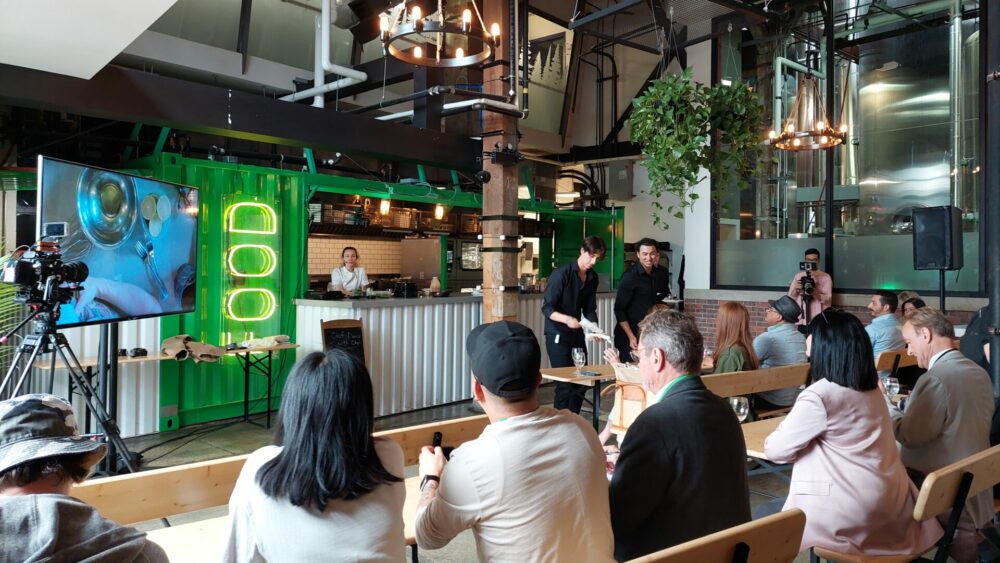
The food prepared used ingredients sourced from the producers who attended the event
(All wines are scored out of a possible five apples)

